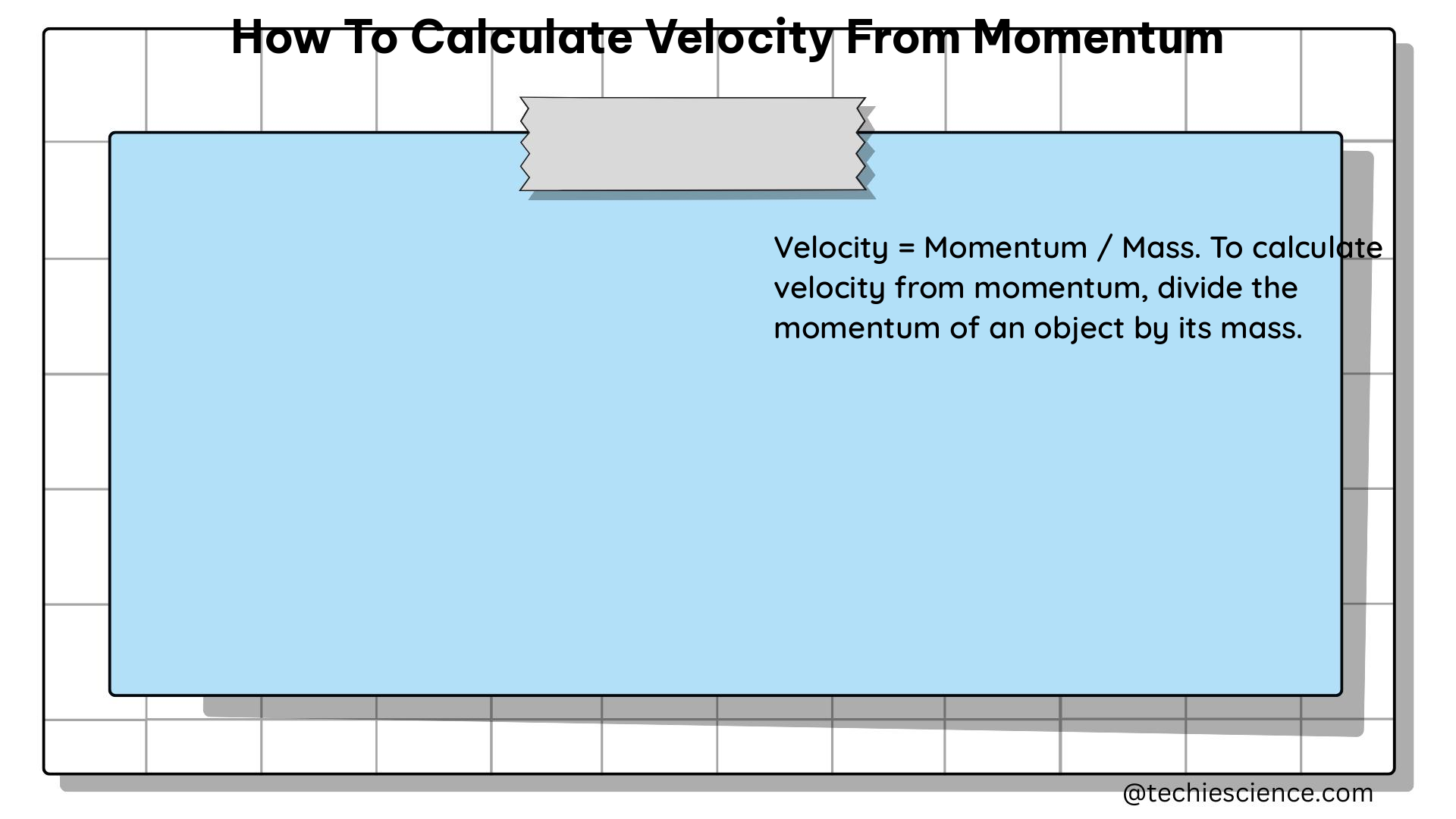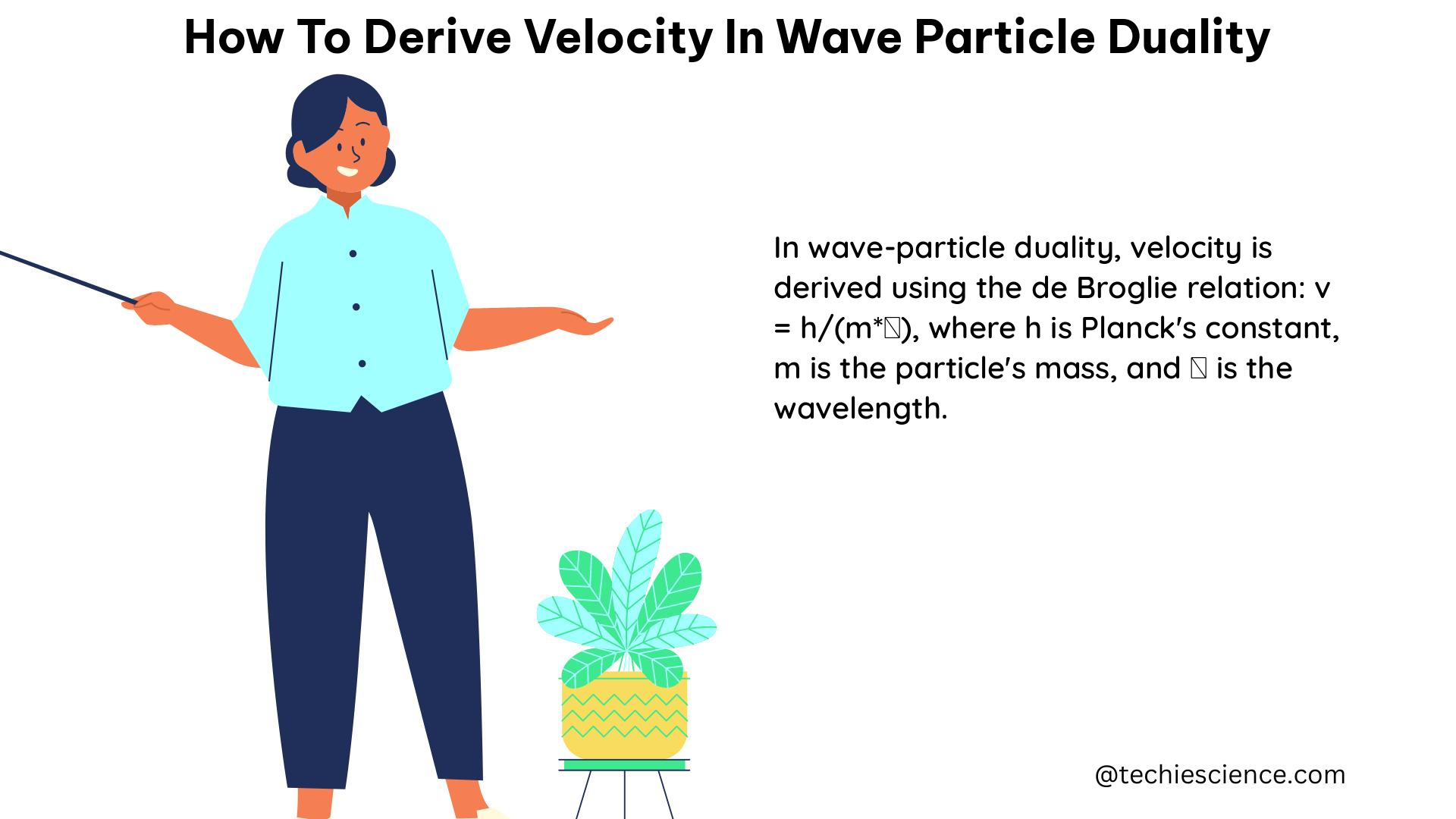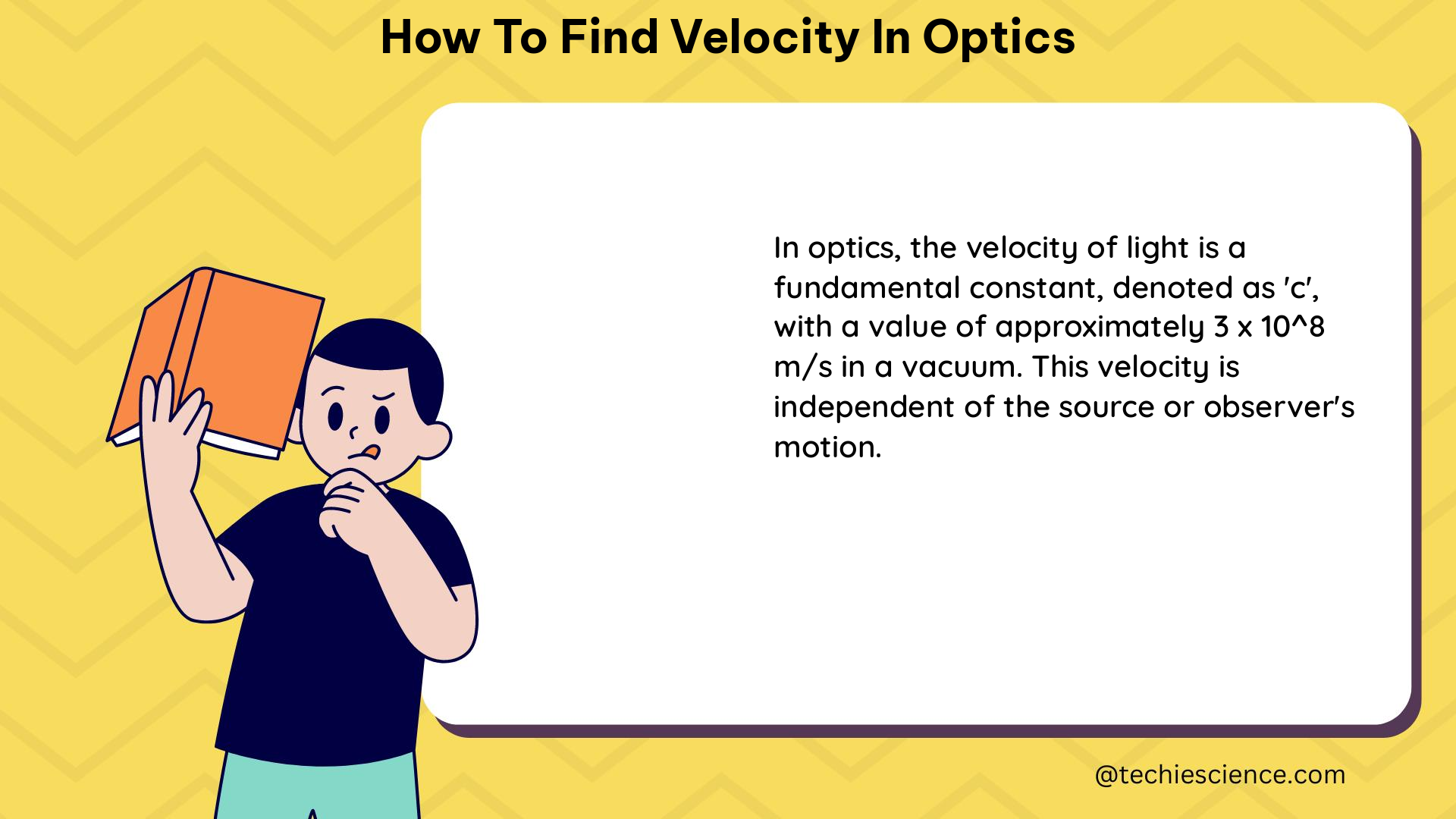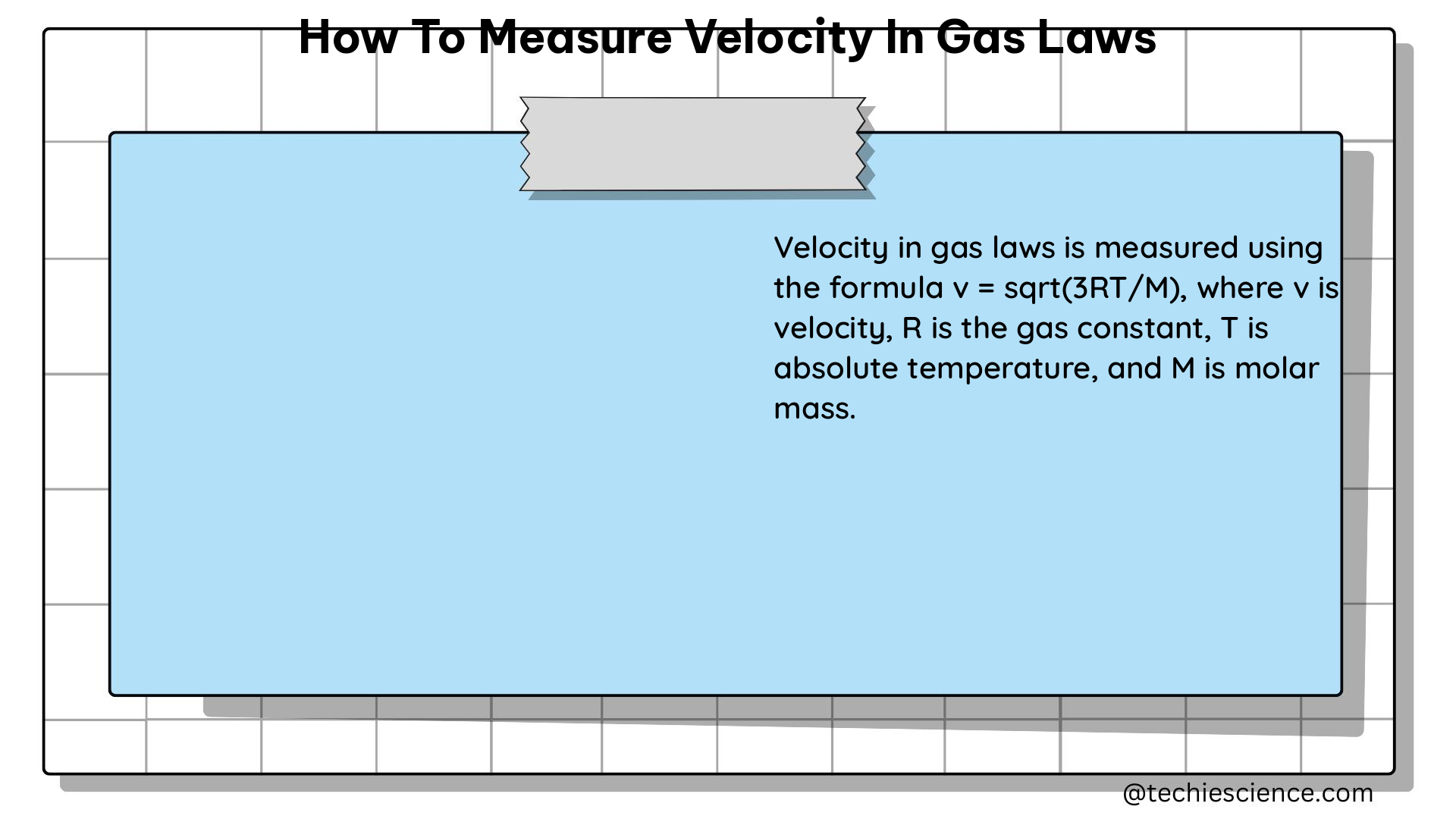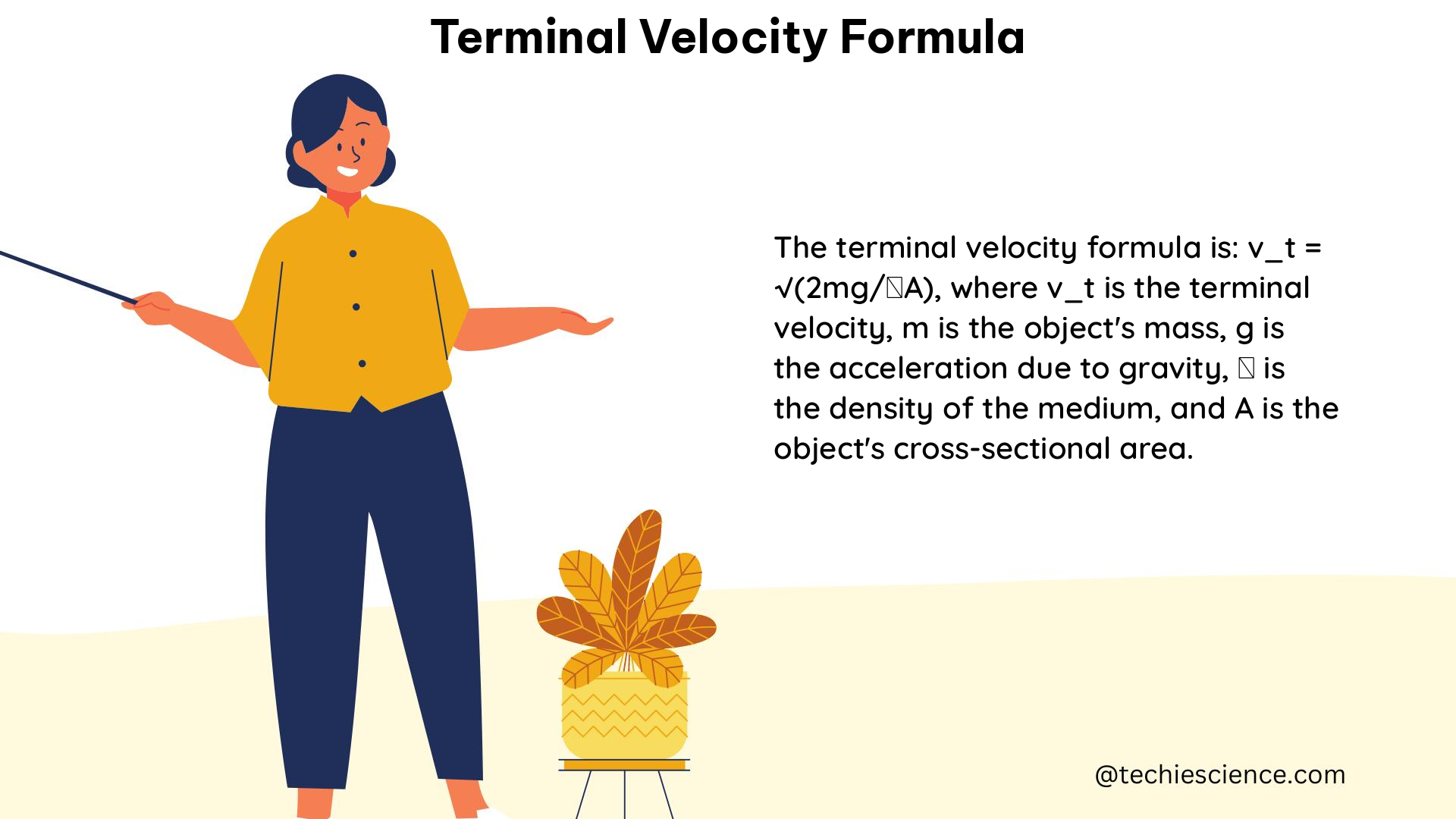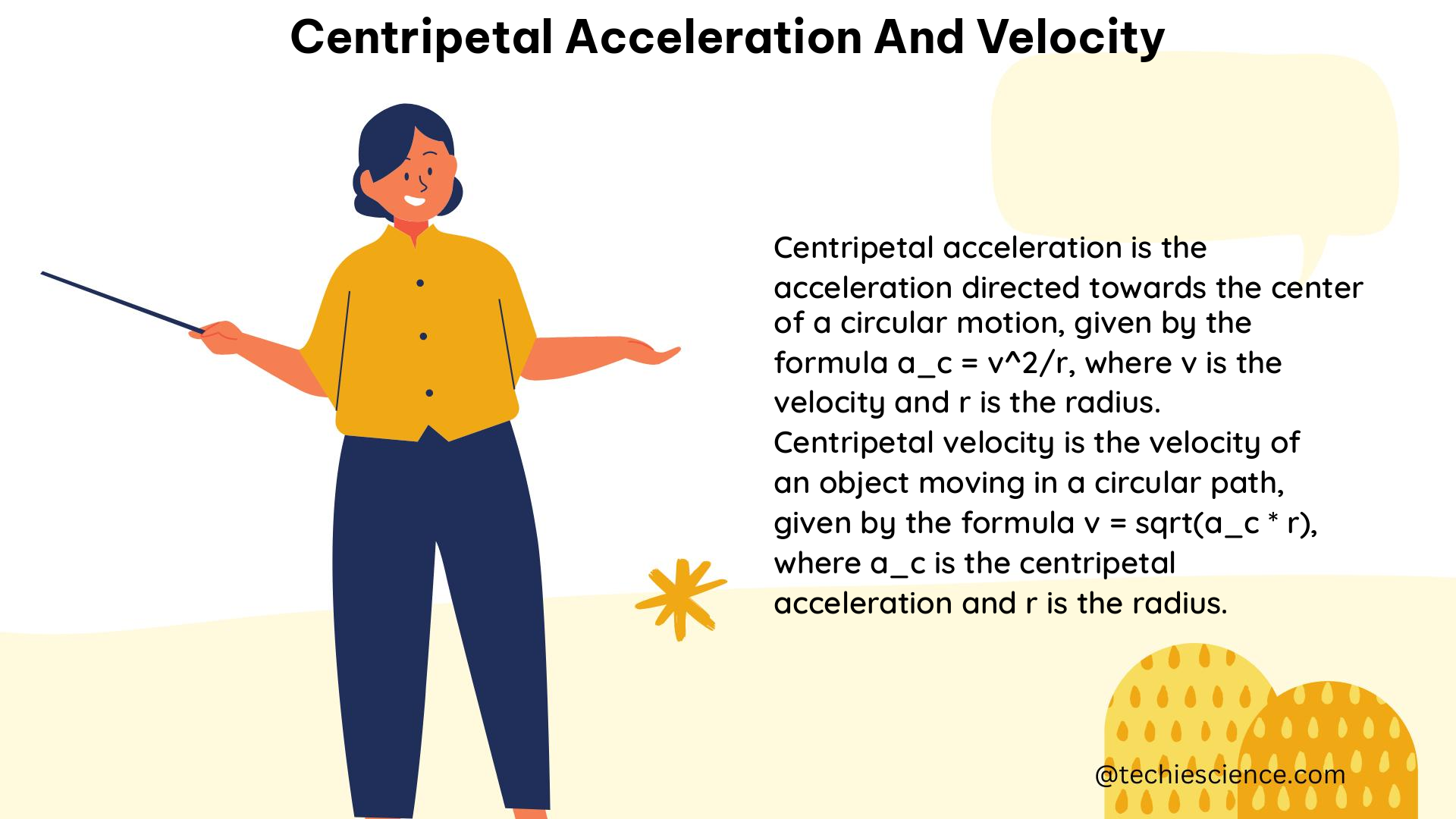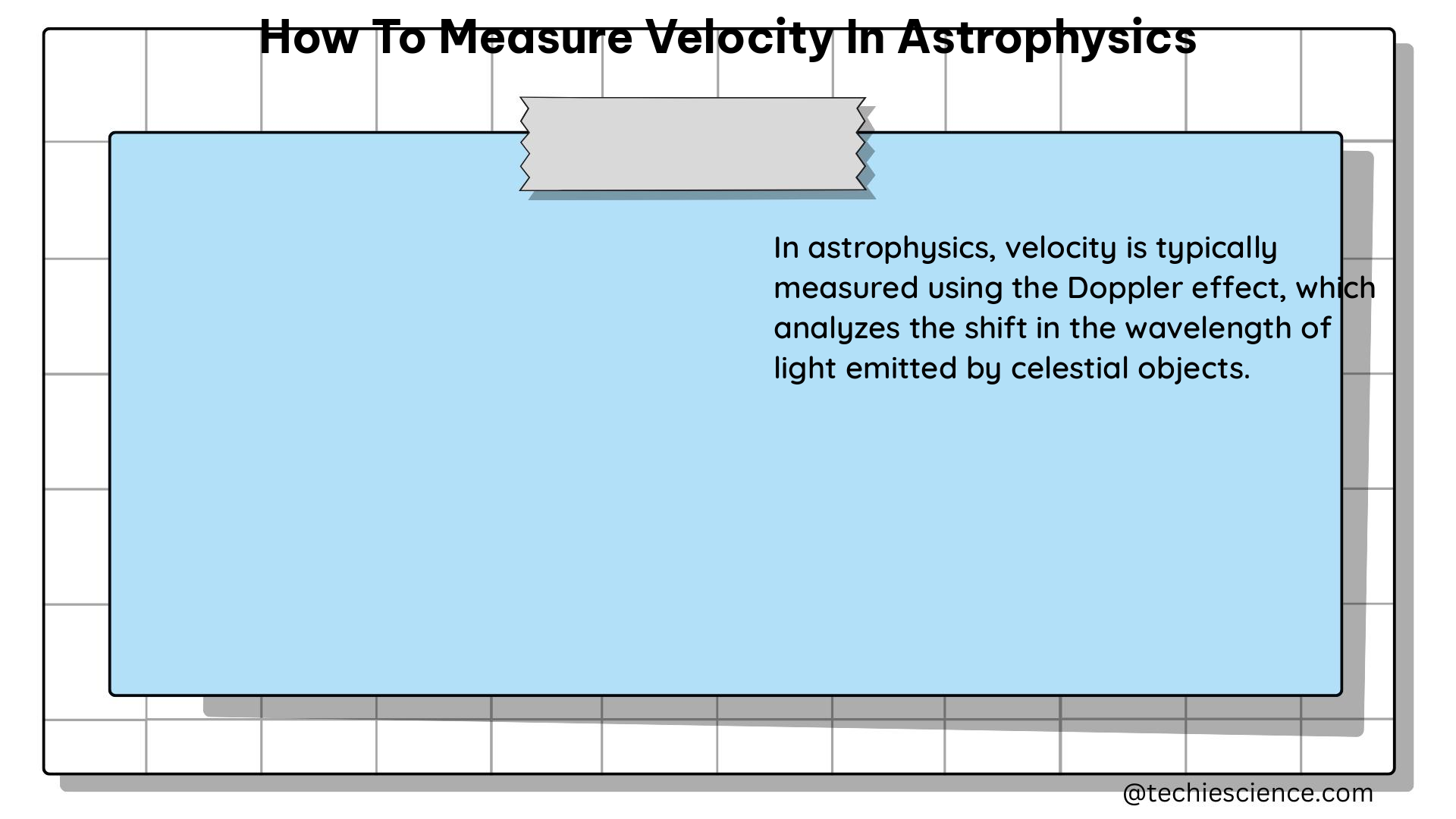Relative velocity is a fundamental concept in physics, particularly in the field of kinematics, which deals with the motion of objects without considering the forces or masses involved. It refers to the velocity of an object as measured with respect to a given observer, which can differ from the measurement obtained by another observer. In the context of relative velocity in opposite directions, this concept becomes particularly important, as it allows us to understand the interactions between objects moving in opposite directions.
Understanding Relative Velocity Formulas
The formula for calculating the relative velocity of an object A with respect to an observer B is:
Vab = Va - Vb
Where:
– Vab is the relative velocity of object A with respect to observer B
– Va is the velocity of object A measured by a third observer
– Vb is the velocity of observer B measured by the same third observer
This formula is crucial in understanding the relative motion of objects, especially when they are moving in opposite directions.
Relative Velocity in Opposite Direction: Examples
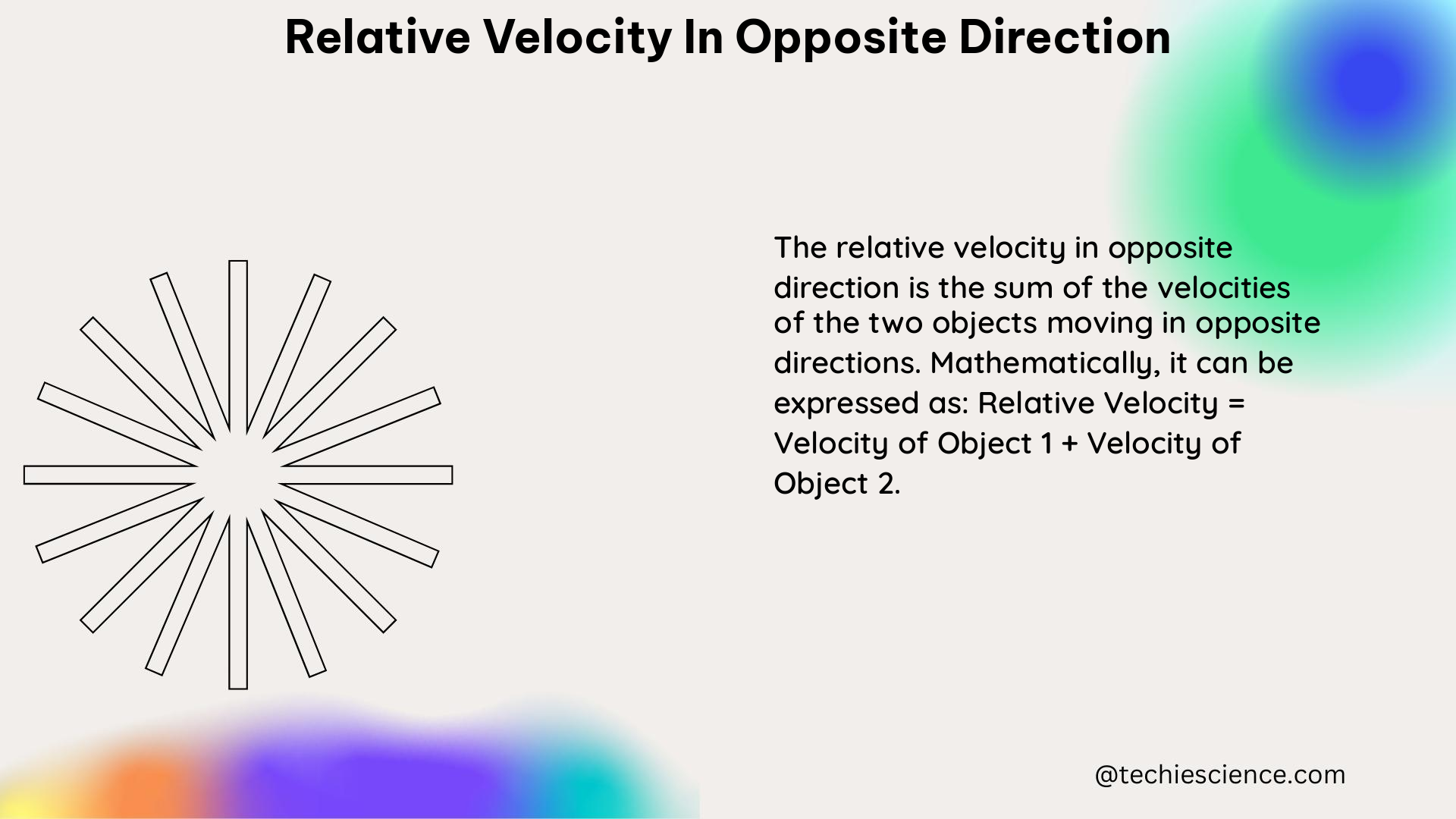
Example 1: Two Cars Moving Towards Each Other
Consider two cars moving towards each other on a straight road. If one car is moving at a velocity of 60 mph northbound, and the other car is moving at the same speed of 60 mph southbound, the relative velocity between them is:
Vab = Va - Vb
Vab = 60 mph - (-60 mph)
Vab = 120 mph
This indicates that the two cars are approaching each other at a combined speed of 120 mph.
Example 2: Man Running on a Highway
Imagine a man running on a highway to the west at a velocity of 10 mph, while observing a car coming in the opposite direction at a speed of 80 mph. The relative velocity of the car with respect to the man is:
Vab = Va - Vb
Vab = 80 mph - (-10 mph)
Vab = -90 mph
The negative sign indicates that the car is moving eastward at a speed of 90 mph relative to the man.
Relative Velocity in Fluid Dynamics
In the context of fluid dynamics, relative velocity plays a significant role in understanding the flow of fluids and gases. For instance, when an airplane encounters a tailwind, the wind’s velocity contributes to the plane’s resulting velocity, increasing its speed relative to an observer on the ground. Conversely, a headwind would decrease the plane’s resulting velocity, while a crosswind would change its direction.
The relative velocity between the airplane and the wind can be calculated using the same formula:
Vab = Va - Vb
Where:
– Vab is the relative velocity of the airplane with respect to the wind
– Va is the velocity of the airplane measured by an observer on the ground
– Vb is the velocity of the wind measured by the same observer on the ground
Relative Velocity in Special Relativity
In the context of special relativity, the relative velocity of two objects moving at the speed of light in opposite directions is 2c, where c is the speed of light. However, it is important to note that this does not imply that the objects are moving faster than the speed of light; rather, it reflects the change in separation distance/time for the two different objects moving relative to a reference frame.
The formula for calculating the relative velocity in special relativity is:
Vab = (Va - Vb) / (1 - (Va * Vb) / c^2)
Where:
– Vab is the relative velocity of object A with respect to object B
– Va is the velocity of object A
– Vb is the velocity of object B
– c is the speed of light
Numerical Problems on Relative Velocity in Opposite Direction
-
Two cars are moving towards each other on a straight road. Car A is moving at a velocity of 80 km/h northbound, and Car B is moving at a velocity of 60 km/h southbound. Calculate the relative velocity between the two cars.
-
A person is running on a track at a velocity of 8 m/s westbound, while observing a car moving in the opposite direction at a velocity of 20 m/s. Calculate the relative velocity of the car with respect to the person.
-
An airplane is flying at a velocity of 500 km/h eastbound, while encountering a headwind of 80 km/h. Calculate the relative velocity of the airplane with respect to an observer on the ground.
-
Two spaceships are moving at the speed of light in opposite directions. Calculate the relative velocity between the two spaceships.
Conclusion
Relative velocity is a crucial concept in physics, with applications in various fields such as kinematics, fluid dynamics, and special relativity. It involves the measurement of an object’s velocity with respect to a given observer, taking into account the direction and magnitude of the velocities involved. The formula for calculating relative velocity varies depending on whether the objects are moving in the same or opposite directions, and understanding this concept is essential for understanding the motion of objects in various contexts.
References:
– Understanding Relative Velocity in Kinematics
– Relative Velocity and River Boat Problems
– Is the Maximum Possible Measurable Velocity 2c?
